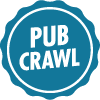
Book Trailers 101
I've been meaning to write a detailed blog post about how to make a book trailer for years now, since I made one for my first novel, Fair Coin. So that was back in... 2012. Yikes!
This isn't that post—not quite. Consider this more of an introductory overview of the process, and if people are interested, I will break the process down further in a series of subsequent posts to make a more comprehensive guide on tools and techniques and other resources.
Anatomy of a Book Trailer
So, you want a book trailer. The first question you have to ask yourself is: Do you need one? Opinions are split on whether they actually encourage people to buy books, even among marketing professionals; it's difficult to measure those outcomes. Then again, it's hard to say how much film trailers encourage (or discourage) people from heading to the theater. For a while it seemed like every book had a trailer, just because, but you certainly don't need one to sell books, and you aren't necessarily at a disadvantage without one. Schools and libraries sometimes show trailers to their teens, or help them make trailers for their favorite books, so there could be some value in making people aware that your book exists. And the very slick, very professional trailer that my current publisher, Adaptive Books, produced for The Silence of Six was shared widely, and many people commented that it made them want the book.
Maybe you just want a trailer because trailers are cool, or you have a neat idea for one, or you have time and money in excess. For me, the thought process was:
I know how to make a trailer myself, so why not?
I want to do everything I can to make my debut novel a success, so if there's a chance a trailer can help, I'm gonna have one.
I have a fun idea for a trailer, and I really want to make it happen.
But you've decided, yes, there will be a book trailer. The next thing you should do is talk to your publicist to see what they might have planned. Some publishers will handle all that for the author, others will cheerfully wish you luck.
If you're on your own, your next decision is a big one: Do you hire a professional to make your trailer, or do you make it yourself? You can make a trailer yourself even if you have zero video production experience, but if you want something lavish, something cinematic perhaps, you will probably need to get more people involved. A basic trailer could run you several hundred dollars, but if you're planning to film this from scratch with actors and costumes and special effects, expect to spend much more than that. For now, let's assume you have practically no budget, because you're a writer, and you still have to buy swag (which should be a separate blog post). Would you believe you can make a decent trailer for $20 or less?
Here's the basic stuff you may need in your book trailer, with some examples from the Fair Coin trailer, embedded below:
A concept
Do you want your trailer to have actors or video footage or a slideshow of images set to text or music? Personally, I don't like trailers that have actors or even narration dramatizing scenes or passages from the book; I prefer getting a sense of the book's tone and plot, which trailers are excellent at conveying. Fortunately those are much cheaper to produce as well.
Because Fair Coin is about a coin that grants wishes, I wanted to show someone flipping a coin. That should be easy, right?
Assets
To make a video, you need assets: video clips, images, sound clips, music, etc. You can find a lot of this for free, usually through a Creative Commons license or for a licensing fee, or you can of course record your own (which then requires, at minimum, a smartphone and at best, a video camera). Licensing fees can vary from a few dollars to hundreds of dollars. In a future post, I'll point out some great places to get free or cheap music and stock photos.
It turns out that to capture a coin flip, you really need a high-speed camera, which is expensive -- even to rent one for a couple of hours. High quality stock footage runs a few hundred dollars for just a thirty-second clip. But I lucked out: I found a perfect clip on YouTube and wrote to the creators for permission to use it. Since it was something they shot just to test their camera, they were happy to give it to me for free, and sent me high quality source video. I still had to tweak the color to what I wanted, but it cost me nothing! I got permission from Sam Weber, the artist who painted the cover for Fair Coin, to use it in the trailer and bookmarks, and he also sent me a high resolution file to work with, which I also tweaked subtly. (Check out Jenna's eyes.) I couldn't get permission for the music I wanted, but I found royalty-free music that I liked and paid $20 to license it. I got the sound effects for free. Total cost for assets: $20.
Editing Software
Even a very simple trailer, like a slideshow, requires editing software. I've made trailers in Windows Movie Maker, and there are some things it does very well, like filters, so I've returned to it even when I have access to fancier programs. So free software like Movie Maker and iMovie on Macs are very much an option, and you can use Audacity for easy audio mixing. I primarily use Adobe Premiere Elements, which is very affordable and offers a robust set of professional features, but you could also spring for Avid or Final Cut if you have the cash and a computer that can run them. I already had Adobe Premiere, so I'm calling that cost zero as well.
You'll see a few simple visual effects in my trailer. The one I really wanted -- the ripple effect -- didn't come with the version I owned, and it was kind of expensive to buy it so I ran a trial version on the clips that I wanted and saved them separately. Tricky, but free!
Total Cost: $20.
Then What?
To oversimplify things, you use the editing software to put all your assets together, then you output a video and upload it to YouTube or Vimeo or Facebook, or however you want to share it. In reality, even though I wasn't paying someone to do the work for me, it did cost me around two days of my own time, which is also valuable. If I had been paying myself to work on the video at my usual freelance rates, I couldn't have afforded it! But basically, I ended up with this:
When the sequel, Quantum Coin, came out, I was pretty sure I didn't need a trailer, but I made one just on principle, and for the symmetry of it, and the process was very similar.
Let me know in the comments if you'd like to know more about making book trailers, and if you have any questions. Also, please share some of your favorite book trailers! Two of my favorites, which are fairly straightforward, are for A Wrinkle in Time (50th Anniversary) by Madeline L'Engle and Tempest by Julie Cross.






